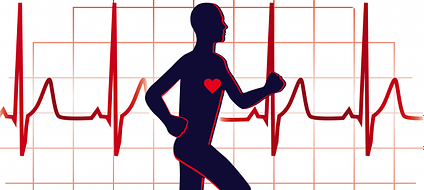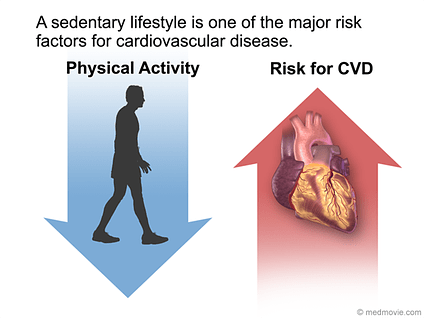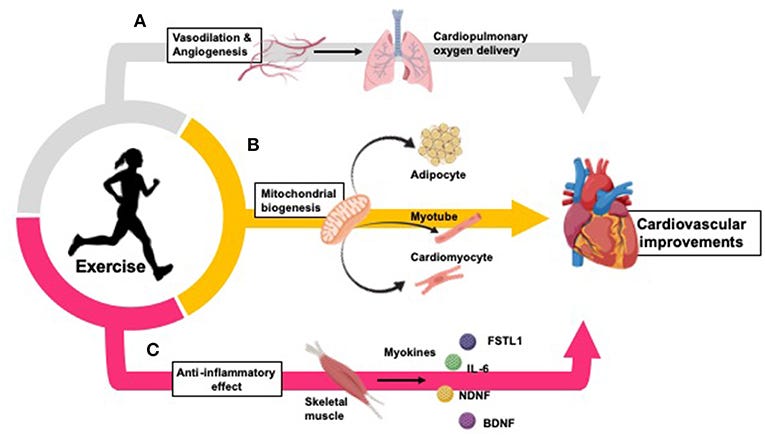
Anticipation and detection of cardiovascular heart disease (CHD) are paramount in its treatment. Understanding the degenerative process and risk factors of CHD helps shape our exercise choices and program development. I would like to cover contemporary research regarding benefits of exercise, in order to curtail the deleterious effects of CHD.

Epidemiological evidence shows that physically inactive people are twice as likely to develop CHD, and 2-3 times more likely to sustain a heart attack than those males who are active (Kenney, Wilmore, & Costill, 2012). Thus, physical inactivity has been declared a primary risk factor for CHD. What then, might be the benefits of resistance and cardiovascular exercise to slow or prevent CHD?

Consider that one manifestation of CHD is narrowed arteries from plaque build-up. What we do know about training the cardiovascular system is that arteries tend to adapt by increasing their diameter (Kenney et al, 2012). This could be very helpful in a person with CHD. Additionally, cardiovascular exercise would also help develop left ventricular size and contractility, improving cardiac output through improved stroke volume. There is also some evidence suggesting that smaller arteries on and throughout the cardiac muscle improve with training. This could help the heart find alternative supply routes around partially blocked coronary arteries (Kenney et al, 2012).

Endurance training might also help those suffering from hypertension by reducing blood pressure (American Heart Association, 2012). Kenney et al. (2012) indicates that systolic and diastolic pressures can decrease by 7 and 6 mmHG, respectively, with exercise. Exercise might also indirectly improve blood pressure via reduction of fat free mass. That is, a reduction in weight causes less cardiac output and peripheral resistance because there is less tissue to supply. Blood lipid levels also experience positive adaptations from endurance training. Kenney et al. (2012) noted that although there was little change in total low-density lipoprotein (LDL), there were significant increases in high-density lipoproteins (HDL). Recall that LDLs tend to deposit cholesterol along arterial walls. HDLs, however, tend to remove cholesterol and transport it to the liver to be metabolized (Kenney et al, 2012). Thus, exercise tends to increase the ratio of HDLs to LDLs, in an advantageous manner.

Endurance training also improves capillarization of tissues (Kenney et al, 2012). Specifically, the number of new vessels into a muscle group increases with training. This helps reduce peripheral resistance, while nurturing working muscles with more nutrients per heartbeat. Arterial-venous oxygen difference also improves with exercise. That is, the amount of oxygen absorbed by a target tissue from the arterioles, improves with training. This helps lower the demand on the heart, and possibly reduce cardiac output (Kenney et al, 2012).
CHD does not have to be a terminal illness: it is detectable, and it is preventable. Substantial evidence exists showing both its etiology and treatability. If we can detect the early onset of CHD, there are pragmatic, non-invasive solutions to combat this disease.
References
American Heart Association (2012). Exercise Could Lower High Blood Pressure Risk. Retrieved October 23, 2013, from https://www.goredforwomen.org/about-heart-disease/heart-disease-news/exercise-could-lower-high-blood-pressure-risk/
Kenney, W. L., Wilmore, J. H., & Costill, D. L. (2012). Physiology of sport and exercise (5th ed.). Champaign, IL: Human Kinetics.
-Michael McIsaac
